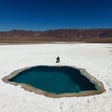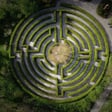
An integrated world - feeling connected through grateful living
Each summer we select audience favourites from The Gist archives to share with all of you. This year we are doing a throwback to our early days with a series on the senses and their impact on our collective well-being. Not just our five physical senses but also our awareness which allows us to develop better habits of mind, feel more compassion for others and practice grateful living. Given the degree of upheaval and hyper-partisanship around the world there is no better time to revisit how we can think about and respond more critically to everything going on within and around us. Whether you've been with us from the beginning or are new to The Gist, we hope you enjoy this summer selection.
This week we examine how grateful living provides us with that much needed sense of integration. One of my favourite authors, Benedictine monk and scholar David Steindl-Rast, has made gratefulness his life's work. Having read and listened to so many different authors, there is something about Brother David that really stands out for me. Perhaps it is his simple but eloquent words, the warmth and humility he exudes, or the depth of his wisdom. Whatever it may be, I find his ideas on gratitude nourishing and very accessible to all of us, no matter our age, race, or culture.
Brother David believes that gratitude goes beyond thankfulness for our worldly possessions or feeling happy when life is easy. He sees gratefulness as an orientation towards life that we carry with us through all its ups and downs. That is why he prefers the term grateful living because he sees it as a stance we take, a choice we make. He points out that grateful living doesn't mean that we can be grateful for everything in our lives or in the broader world. Certainly when life presents us with difficult circumstances, or when someone hurts us, it is not possible to be grateful. Nor is it possible to feel gratitude for all the pain, suffering and injustice we see in the world. But he proposes that it is possible to feel grateful in each moment for the opportunity that moment presents. See full transcript here.
Photo Credit: ANIRUDH



















